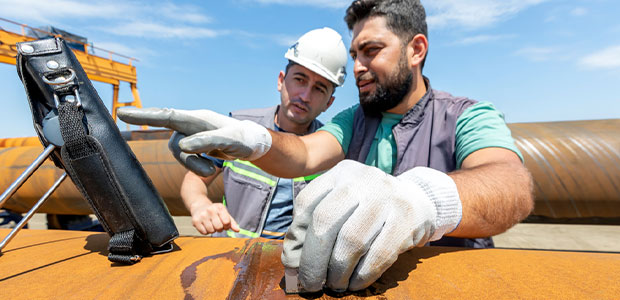
Safety Considerations for Destructive and Nondestructive Testing
- By Devin Partida
- Nov 18, 2021
It’s commonly known that products need to be tested before they’re available for use.
Across all industries, different mechanical components and materials need to undergo rigorous testing to ensure they won’t fail when being used. If they do, further developments need to be made to ensure the next round is successful. Manufacturers and other industrial environments must employ best safety practices when using nondestructive testing (NDT) and destructive testing (DT). There are many applications for NDT and DT. Some of the top industries that rely on these methods are automotive, aerospace, oil and gas, marine, manufacturing and power.
For example, take the automotive industry. How could manufacturers ensure vehicles are safe without engaging in DT? As companies try to implement artificial intelligence (AI) into cars, these safety tests become more important. Achieving high levels of safety is something every employer across these sectors wants.
Here are some of the most important safety considerations that should be made when engaging in NDT and DT, as employee safety is paramount.
Safety Considerations for NDT
While NDT is typically a safer testing method than DT, there are still safety practices employers should implement to protect employees from injuries. Manufacturing is one industry that uses NDT frequently, mainly to keep their products consistent and better controlled during manufacturing processes.
Here are some of those practices employers should consider implementing:
- Appropriate clothing. It’s common for NDT technicians to work above ground at elevated heights, so wearing fall protection apparel is crucial and OSHA standards should be followed.
- Eye protection. Protective eyewear should be worn to protect the eyes from irritation.
- Employee training. All employees should receive proper training before engaging in any NDT methods.
- Manufacturer’s recommendations. Any machines used and any materials being tested should have manufacturer’s recommendations, and they should be followed closely to avoid potential incidents.
Considerations for DT Safety
As its name suggests, DT intentionally destroys assets to see their point of failure. If no safety protocols are in place or followed, this could lead to potential injuries or fatalities. Therefore, employers in these industries need to put forth comprehensive safety precautions. DT methods are considered less safe than NDT, as destroying any mechanical components or equipment can lead to unsafe physical conditions.
Many mass-produced items go through DT because destroying a limited number of these items ends up being economically negligible.
Many DT methods take place in a safe lab environment. Here are some of the safety considerations for lab-related DT methods:
- Fire-related PPE. If fire is being used to test components, employees must wear PPE that can withstand extreme heat or flames.
- Safety glasses. Materials undergoing testing could leave behind debris that could damage the eyes.
- Close-toed shoes. It’s vital to protect feet from any debris or other materials left behind.
- Training. DT requires all employees to be trained to ensure no employee’s safety is compromised.
- General lab rules. Following all posted signage and other basic lab safety requirements is essential.
- Power tools. Power tools or electrical equipment should be thoroughly inspected to ensure they’re in proper working order.
Keep all these safety considerations in mind. Employing these measures will prevent employee injuries or deaths, which is something every employer should prioritize.
Safety Precautions Save Lives
While NDT is typically safer than DT, both testing methods are essential. No matter the industry, taking extra safety precautions is crucial, as failing to do so could result in property damage, employee injuries or fatalities. Manufacturers should be sure to consider some of the safety measures listed above during NDT and DT to protect workers and equipment alike.